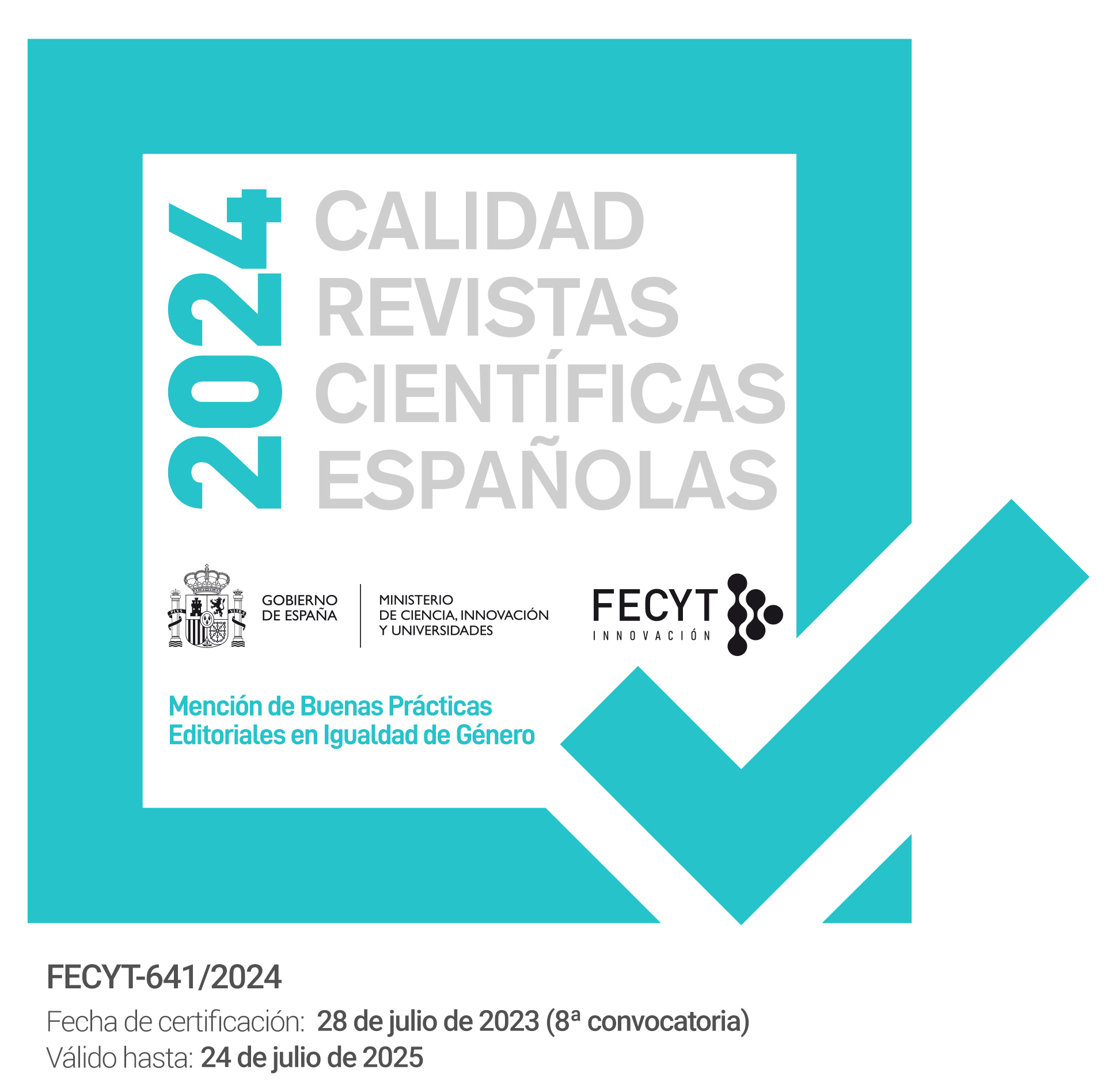Evolution of the l and r liquid sounds in spanish: two regular patterns in their dissimilation
DOI:
https://doi.org/10.12795/PH.2021.v35.i01.14Keywords:
dissimilation, syllabic structure, liquids, syncope, muta cum liquidaAbstract
The aim of this research is to make an approach to the changes that the l and r liquid sounds suffered in their evolution from Latin to Spanish. The dissimilation phenomena these sounds experimented and how they worked will be observed, as well as the coexisting and established forms that resulted from this language change. Studies on the History of Spanish have superficially dealt with these kinds of linguistic changes since these phenomena have been considered as occasional and explained by the similarity in their articulation. Therefore, this article pretends to show the existence of two patterns that are useful to difference both sounds, as it can be seen in MARMORE>mármol or CEREBRU>celebro (act. cerebro).
Downloads
References
Alcaraz Varó, E. y Martínez Linares, M. A. (2004). Diccionario de lingüística moderna. Ariel.
Ariza Viguera, Manuel. (2012 [1984]). Fonética y fonología históricas del español. Arco-Libros.
Bustos Tovar, E. (1960). Estudios sobre asimilación y disimilación en el íbero románico. Instituto Miguel de Cervantes.
Corominas, J. y Pascual, J. A. (1980-1991). Diccionario crítico etimológico castellano e hispánico. Gredos.
Catalán, D. (1989). En torno a la estructura silábica del español de ayer y del español de mañana. El español. Orígenes de su diversidad. Paraninfo.
De Granda Gutiérrez, G. (1966). La estructura silábica y su influencia en la evolución fonética del dominio ibero-románico. Consejo Superior de Investigaciones Científicas.
García de Diego, V. (1985). Diccionario etimológico español e hispánico. Escapa-Calpe.
Hidalgo, A. y Quilis, M. (2012). La voz del lenguaje: fonética y fonología del español. Tirant Humanitats.
Institut d’Estudis Catalans. Diccionari català-valencià-balear [en línea].
Lapesa Melgar, R. (2014 [1981]). Historia de la lengua española. Gredos.
Lázaro Carreter, F. (1974). Diccionario de términos filológicos. Gredos.
Lewandowski, T. (1982). Diccionario de lingüística. Cátedra.
Menéndez Pidal, R. (1973). Manual de gramática histórica española. Espasa-Calpe.
Navarro Tomás, T. (1990). Manual de pronunciación española (pp. 113-ss). Consejo Superior de Investigaciones Científicas.
Penny, R. (2014 [1996]). Gramática histórica del español. Ariel.
Pensado Ruiz, C. (1984). Cronología relativa del castellano. Universidad de Salamanca.
― (1992). Iberorromance -RL- > -LR-. Estudios filológicos en homenaje a Eugenio de Bustos Tovar. Ediciones Universidad de Salamanca.
Quilis Morales, A. (2004). Fonética histórica y fonología diacrónica. UNED.
Radatz, H. I. (s. f.). Die Appendix Probi. Texto en línea.
Real Academia Española: Banco de datos (CORDE) [en línea]. Corpus diacrónico del español.
Said Ali, M. (1964 [1931]). Gramática histórica da língua portuguesa. Melhoramentos.
Väänänen, V. (1966). Le latin vulgaire des inscriptions pompéiennes (p. 81). Akademie-Verlag.
― (2003). Introducción al latín vulgar. Gredos.
Vázquez Cuesta, P. y Mendes Da Luz, A. (1971). Gramática portuguesa. Gredos.
Williams, E. (1975). Do latim ao português. Edições Tempo Brasileiro.
Published
How to Cite
Issue
Section
License
Copyright (c) 2021 Philologia Hispalensis

This work is licensed under a Creative Commons Attribution-NoDerivatives 4.0 International License.
The printed and electronic editions of this Journal are edited by the University of Seville Editorial, and the source must be cited in any partial or total reproduction.
Unless otherwise indicated, all the contents of the electronic edition are distributed under a license of use and distribution “Attribution-NonCommercial-NoDerivatives 4.0 International” . You can view the informative version and the legal text of the license here. This fact must be expressly stated in this way when necessary.
Authors who publish in this journal accept the following conditions:
- The author/s retain copyright and grant the journal the first publication right, and accept it to be distributed with the Creative Commons By NC ND 4.0 licence, which allows third parties to use what is published whenever they mention the authorship of the work and the first publication in this journal and whenever they do not make commercial use and reuse it in the same way.
- Authors can make other independent and additional contractual agreements for the non-exclusive distribution of the article published in this journal (e.g., include it in an institutional repository or publish it in a book) provided they clearly indicate that the work was published for the first time in this journal.
Authors are allowed and recommended, once the article has been published in the journal Philologia Hispalensis (online version), to download the corresponding PDF and disseminate it online (ResearchGate, Academia.edu, etc.) as it may lead to productive scientific exchanges and to a greater and faster dissemination of published work (see The Effect of Open Access).
Accepted 2021-05-27
Published 2021-12-21
- Abstract 303
- PDF (Español (España)) 389
- HTML (Español (España)) 469
- XML (Español (España)) 104







